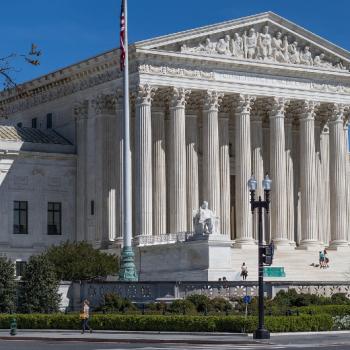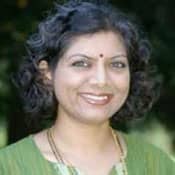In a recent essay on Beliefnet.com, Manhattan-based journalist Shoba Narayan says "Stop Building Hindu Temples." She does however offer an explanation for these rather strong words, suggesting, "In their zeal to erect temples, America's Hindus aren't asking who will maintain them years from now." She sums up in a single paragraph the difficult journey an American Hindu immigrant makes, minimizing the angst that accompanies letting go of the home country. In India, Hindus are the majority, learning their faith through osmosis; as immigrants they are not really prepared for the challenges of raising minority Hindu children in the new country.
I know first-hand the struggle of being an immigrant and moving from India to the U.S. with $250 in my pocket, and I appreciate the devotion that leads people to build numerous temples in North America. As an elementary school child, I was at the consecration of the Flushing Ganesh Temple in the '70s, awed by the number of people who looked like me. I understand the need to find a sacred space that holds something familiar—a deity in blackstone of Venkateswara, a marble Lakshmi Narayana, a rough wooden Radha Krishna—along with the Sanksrit prayers whose meaning I may not know, but offer the comfort that they are thousands of years old. I face the difficulty of parenting Hindu American children where the explanations of Hinduism in their textbooks and college classrooms can cause embarrassment and ridicule, at a time when fear of the "other" is rising.
Narayan doesn't explain the challenges of Hindu temples in India, that they are not independent of the government. The disease of corruption in India affects not just the political system, but also temples, whose funds are managed by government officials, a fate not faced by other faiths' houses of worship. She doesn't consider the reality of colonialism and globalization, about which Columbia University professor Sheldon Pollock had this to say: "Colonialism nearly killed India's capacity to know its past; globalisation threatens to destroy its will." Nor does she consider the impact that predatory proselytism can have on temple attendance and support.
But what she writes of is my reality: many temples are being built here in southeastern Michigan. I am as concerned as she is about who will sustain these temples. It's rare to hear a volunteer who's around my age, with my American accent; most are there to accompany their parents on a fleeting visit or to pick up the kids who the grandparents were babysitting. But I realized early on that I needed a temple to help create an environment where my children can learn Hinduism through osmosis, possibly because I had lived in India during high school and college. I volunteered at my local temple soon after moving to Troy, when my younger one was still an infant and have continued over the years, bringing my children to various rituals, classes, events. My efforts to support the temple also included bringing in new ideas: a temple-based preschool; a newcomer's club to encourage membership; a playgroup to encourage stay-at-home moms to get out and bond with others, while providing an opportunity for the kids to interact; a "Basics of Hinduism" series for explaining and living Hinduism in an American context; an outreach committee to be part of the temple's working committees, that would help host visitors and participate in interfaith and community service activities; programs geared toward interfaith couples; a basketball court in one of the temple spaces. Many of my ideas were too different, perhaps too soon, and garnered little support.
Fortunately, I found that there are people in the temple community who understand what I am saying—the Outreach Committee lives on; people from around the neighborhood are invited to the major events—be it the Prana Prathishta of the new deities as part of the expansion, or the temple's annual summer fun fair called Anand Bazaar. In 2013, the temple is planning to host the 14th annual World Sabbath of Religious Reconciliation, a major regional interfaith event. The temple-based preschool is also a reality; while it's a decade too late for my children, hopefully, these youngsters will develop an attachment to the temple as they participate in rituals, put on plays during the holy days, and grow up feeling a connection to the ancient faith of their ancestors. This hope I feel on seeing them and all the young students who attend the myriad of classes provided at the temple allays concerns I have about the lack of Hindus raised in America involved in the temple, even as I wonder if the hope is misguided.





